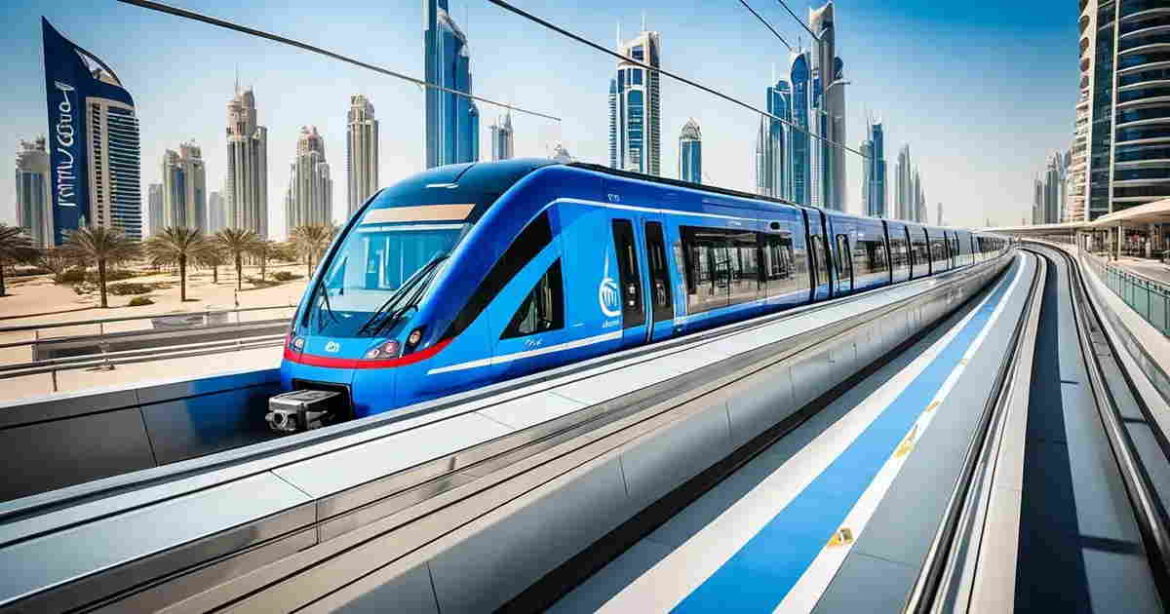By Staff Reported
Dubai’s ambitious urban expansion continues with the construction of the Dubai Metro Blue Line, a landmark infrastructure project that will redefine daily travel across the city. Featuring 14 strategically located stations, the new line aims to connect high-density residential and commercial areas while offering a direct link to Dubai International Airport (DXB).
Slated for completion in 2029, coinciding with the 20th anniversary of the Dubai Metro, the Blue Line will consist of two routes — a 21-kilometre main line and a 9-kilometre secondary route. Once operational, it is expected to serve nearly one million passengers daily and reduce road congestion by 20%, according to the Dubai Roads and Transport Authority (RTA).
Construction is moving swiftly: following the groundbreaking ceremony in June, RTA confirmed that the project is already 10% complete, with 30% completion targeted by the end of 2025.
Strategic Connectivity
The Blue Line has been carefully designed to link underserved but rapidly growing communities to the existing Red and Green Lines, while also improving airport access. It features major interchange points, allowing seamless travel across Dubai’s metro network.
One of its most notable features is the direct airport connection, with travel times from key neighbourhoods to DXB expected to drop to around 20 minutes. It remains under consideration whether this link will integrate with the current Red Line airport stations (Terminals 1 and 3) or introduce a new dedicated station.
The 14 Blue Line Stations
1. Al Jaddaf (Existing Creek Station)
The starting point of the main route, this station will connect the Blue Line with the Green Line, offering easy access to the scenic Dubai Creek waterfront.
2. Centrepoint (Al Rashidiya)
Serving as the terminal for the smaller route, Centrepoint — currently the Red Line’s endpoint — will extend connectivity for Al Rashidiya residents while retaining its popular free parking facility.
3–5. International City (Three Stations)
Three new stations will enhance mobility in International City, including one underground interchange. This hub — home to Dragon Mart — will become one of Dubai’s most accessible districts under the new system.
6. Emaar Properties Station (Dubai Creek Harbour)
Destined to be the world’s tallest metro station, this architectural marvel will handle up to 160,000 passengers daily. A 1.3-kilometre viaduct will carry the metro across the Dubai Creek, marking a major engineering milestone.
7. Academic City
This station will serve Dubai’s vast university district, home to institutions such as Heriot-Watt and Middlesex University, catering to an estimated 50,000 students by 2029.
8. Dubai Silicon Oasis (DSO)
A vital addition under the Dubai 2040 Urban Master Plan, this station reinforces DSO’s role as a global technology hub. Travel time from Bur Dubai to DSO will be cut in half — from 50 minutes to about 25 minutes.
9. Al Warqa
This densely populated residential area — known for Dubai Safari Park — will benefit from a direct connection through the smaller Blue Line route.
10. Dubai Festival City
A major residential and retail destination, Dubai Festival City will gain a direct metro link, easing reliance on the abra boat services to Creek Station and improving access for its 77,000 residents.
11. Mirdif
The Blue Line will connect this family-friendly suburb, offering metro access to Mirdif City Centre and Al Mushrif Park, reducing car dependency for thousands of commuters.
12. Ras Al Khor
Located between International City and Dubai Creek Harbour, this station will enhance access to the Ras Al Khor Wildlife Sanctuary, known for its flamingos, while easing congestion through improved public transit options.
A Vision for a Connected Future
The Dubai Metro Blue Line is more than a transport project — it’s a key pillar of the emirate’s future mobility strategy. By linking residential communities, educational zones, business hubs, and the airport, the line will bring the city’s vision of a smart, sustainable, and connected Dubai closer to reality.
Upon completion in 2029, the Blue Line will not only mark two decades of metro excellence but also a new era of urban mobility designed for the city’s next generation.


